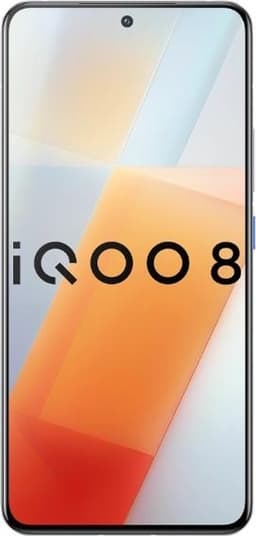- Archive
- vivo iQOO 8 vs Xiaomi Redmi Note 13 Pro
vivo iQOO 8vsXiaomi Redmi Note 13 Pro
We compare these two popular phones to help you decide which one fits your needs and budget better.

Quick Stats

Quick Stats
Note: Highlighted specifications show differences between the two devices.
| Metric | vivo iQOO 8 | Xiaomi Redmi Note 13 Pro |
|---|---|---|
| Connectivity | #439 | #365 Winner |
| Design | #284 | #188 Winner |
| Display | #189 | #68 Winner |
| Performance | #242 Winner | #373 |
| Battery | #349 | #140 Winner |
| Camera | #426 | #18 Winner |
Note: Lower rank number indicates a better position in category.
No significant specification differences found between these devices.
vivo iQOO 8
Strengths
Weaknesses
Xiaomi Redmi Note 13 Pro
Strengths
Weaknesses
vivo iQOO 8
The Vivo IQOO 8 is an impressive flagship device that boasts a unique camera setup and sleek design. The phone's flat back, aluminum frame, and curved display give it a classy look that sets it apart from other smartphones. One of the standout features of the IQOO 8 is its camera capabilities. The phone's 50MP primary sensor takes excellent photos, with clear details and good low-light performance. The ultra-wide-angle lens adds flexibility to photography, while the video stabilizer provides smooth footage even during intense activities like jogging or running. The phone also features a range of camera modes, including night mode, portrait mode, and slow-motion capabilities. The 4K video recording is excellent, with minimal jitter and great color reproduction. In terms of performance, the IQOO 8 is a powerhouse, handling demanding games and tasks with ease. The gaming experience is enhanced by the phone's cooling system and optimized software. While the IQOO 8 has its strengths, it also has some drawbacks. The camera bump on the back can be slightly raised, which may not be ideal for everyone. Additionally, some of the camera features may feel overwhelming or unnecessary to users. Overall, the Vivo IQOO 8 is a solid flagship device that offers impressive performance, excellent cameras, and sleek design. While it may have some minor flaws, it's definitely worth considering for those in the market for a high-end smartphone.
Xiaomi Redmi Note 13 Pro
The Xiaomi Redmi Note 13 Pro is a mid-range smartphone that boasts an impressive 200-megapixel camera, along with other notable upgrades this year. The device features a typical Xiaomi design, with a square camera housing and plastic frame, but now has IP54-rated water resistance. One of the standout features of the phone is its display, which has been upgraded to a 6.67-inch OLED screen with a 1220p resolution, Gorilla Glass Victus protection, and a 120Hz refresh rate. The higher resolution results in a pixel density of 446 PPI, and the support for 12-bit color depth and HDR10+ video is also noteworthy. The phone's performance is driven by a Qualcomm Snapdragon 7s Gen 2 chipset, which provides solid everyday performance and 5G connectivity. Battery life is decent, with an overall active use score of 10 hours and 16 minutes, although charging times are somewhat average. The phone supports 67W fast charging, but the actual charging speed was only marginally faster than usual. The cameras on the Redmi Note 13 Pro are a mixed bag, with the main camera producing excellent photos during the day and night, thanks to its 200-megapixel resolution. However, the other cameras – including an 8-megapixel ultra-wide lens and a 2-megapixel macro sensor – are somewhat lacking. Overall, the Xiaomi Redmi Note 13 Pro is a solid mid-range smartphone that offers good value for money. While it has some notable upgrades over last year's model, its performance and camera capabilities make it worth considering for anyone looking for an affordable device with impressive features.
Need help choosing?
Read our detailed reviews to understand which device is better for your specific needs and budget.
Compare other phones
Explore comparisons between any other phones
Choose two different items to see a detailed comparison of their specifications, performance, and features